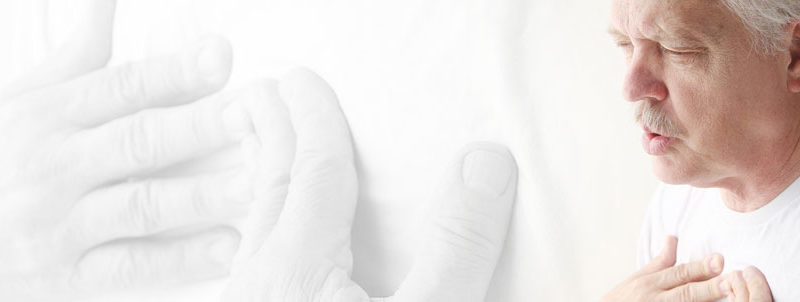HOW TO TREAT A CASE OF DYSPNEA?
Under normal conditions, we do not pay any attention how we breathe. If the physical activity becomes more significant than usually, cells oxygen requirement sharply increases. So there is a physiological dyspnea, most often it lasts a couple of minutes.
If you become feeling shortness of breath doing simple actions or even at rest, then this is already beyond the norm. What is meant here is a pathological dyspnea or short wind, and it is impossible by any means to treat it in home conditions or make advanced such state! You risk seriously protracting the illness!
Dyspnea is usually associated with the fact that pressure in the myocardium supply vessels increases. The further the disease progresses, the more pronounced dyspnea becomes: if in the early stages it appears only in case of physical activity, then in neglected cases the patient suffers from oxygen deficiency even at rest.
IMPORTANT: In case of severe heart diseases, there is often paroxysmal nocturnal dyspnea – the sleeping patient suffers a sudden asthma attack. The appearance of such dyspnea leads to congestion of lungs liquid.
Respiratory embarrassment
When it comes to respiratory system diseases, dyspnea is often chronic – the patient may suffer from it for several months or even years.
Usually such shortness of breath is as follows: after making a short quick breath, a person breathes out with great difficulty – noisily, often with a cough. To get rid of an attack, you usually have to use an inhaler (the same as at asthma case).
Besides that, gradually increasing dyspnea may be a symptom of the fact of neoplasms appeared in the lungs. The more the tumor becomes, the dyspnea is stronger. And, of course, dyspnea often arises in case of infectious diseases: pneumonia, acute bronchitis. After the main pathology is cured, the dyspnea will be gone too.
IMPORTANT: If dyspnea appears rapidly, intensifies quickly and isaccompanied by bubbling in the patient’s chest, this is the reason for the urgent emergency call! Most likely, a toxic edema has started – this is a condition that requires immediate delivery of health care.
Nervous disorders
More or less expressed dyspnea is observed at 75% of patients of neuropathologists and psychiatrists. People complain of shortness of breath, which is often followed by a sharp death anxiety. Such psychogenic dyspnea usually progresses in hypochondriac people with a penchant for hypochondria.
The specific difference between psychogenic dyspnea and other types of shortness of breath is its “noisiness”: the patients moan, groan, often and loudly breathe, seeking to attract attention.
Very often shortness of breath is accompanied by the following endocrine diseases:
Thyrotoxicosis. Accelerated metabolism leads to the fact that the patient’s body begins to need a lot of oxygen, hence the shortness of breath;
Diabetes mellitus. Progressing, this pathology affects the blood vessels, causing the body tissues to begin to suffer a shortage of oxygen;
Obesity. It seriously complicates the heart, lungs and respiratory muscles function, which leads to the development of dyspnea.
How to cope with shortness of breath?
First of all, we strongly recommend you to see a doctor! As it follows from the described above, in many cases shortness of breath is a manifestation of major illnesses, many of which pose an imminent threat to life. Do not risk and do not delay with seeking medical advice: only the doctor can determine the cause of dyspnea.
If you have already completed the examination, have convinced of the absence of a threat to your health and now you just want to get rid of shortness of breathe, we can recommend you the following ways to combat this disorder:
Smoking cessation. Perhaps it is the most important recommendation: if you smoke, staying off cigarettes will minimize dyspnea or will let you completely get rid of it!
Physical activity. Regular exercises (any sports activities, fitness, fresh air and exercise) allow regulating the all body systems functioning, including the respiratory organs. Often shortness of breath is associated with low tonicity – unfortunately, it is natural occurrence in case of sedentary lifestyle;
Folk remedies. Before using any infusions, you should consult your doctor.
Breathing exercises. Performance of breathing exercises is perfectly suitable for breath normalization (including night sleep breathing). You can do any breathing exercises, but the best results come from using a specialized simulator – for example, “Samozdrav” training device allows you to cope with shortness of breath really quickly.
If dyspnea seems to be your trouble:
- Consult a doctor and find out what is the reason for such state emergence;
- Mend you lifestyle ways, give the body tone, and engage in sports activities;
- Do breathing exercises two or three times a day.
There will be quite enough to attempt these measures in order to get rid of shortness of breath unrelated to serious pathology.


